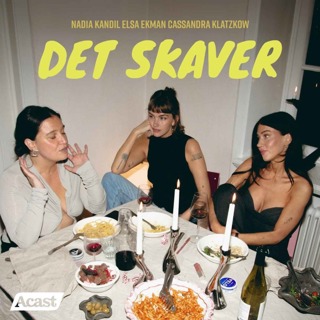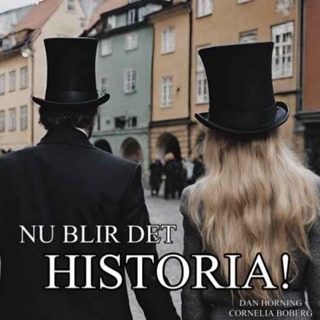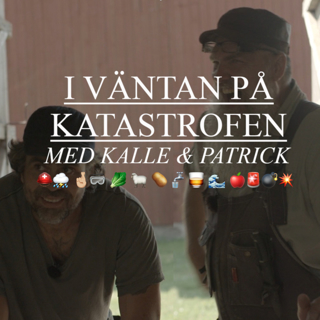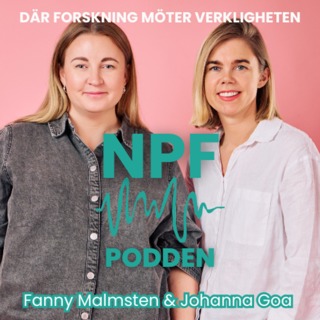
67. The Story Behind Bordeaux's Famous (and Controversial) Wine Classifications
Resources & Links Sign up for the Wine Educate Newsletter: www.wineeducate.com/newsletter-signup How to Contact Us Email: joanne@wineeducate.com Website: www.wineeducate.com Instagram: @wineeducate If you have questions about upcoming WSET classes, coaching or trips book a 15 min free discovery call with Joanne! https://calendly.com/joanne-wineeducate/wset-discovery-call In this episode, we continue our exploration of Bordeaux wine laws—this time at the WSET Level 3 level—focusing on the complex and sometimes controversial classification systems. Unlike appellations, which are based on geography, grape varieties, and winemaking rules, classifications rank individual estates (châteaux), functioning more like brands. This distinction, along with changes in ownership and vineyard size over time, has created ongoing debates about fairness and relevance. We cover: The 1855 Classification – Commissioned for the Paris Universal Exhibition, ranked by price rather than tasting, and intended to be permanent. Includes the famous upgrade of Château Mouton Rothschild after decades of lobbying. Cru Bourgeois – Unique to the Médoc, established in 1932, and reshaped multiple times due to controversy and lawsuits. Now reviewed every 5 years. Graves Classification (Pessac-Léognan) – Separate lists for red and white wines, with no ranking, and all classified châteaux now located within Pessac-Léognan. Saint-Émilion Grand Cru Classification – The only classification within the appellation system, intended to be reclassified every 10 years, but plagued with disputes, lawsuits, and recent high-profile withdrawals. If you're studying for Level 3, understanding the history, purpose, and controversies behind these systems can help you navigate exam questions and connect the theory to real-world wine market dynamics. Next week, we move from Bordeaux to Burgundy—another region where wine laws and classifications are both fascinating and essential for your WSET studies.
14 Aug 13min

66. WSET Level 2: Understanding Bordeaux's Regions, Grapes, and Classifications
Resources & Links: Sign up for the Wine Educate newsletter – weekly study tips and resources for Levels 1, 2, and 3 www.wineeducate.com/newsletter-signup If you have questions about upcoming WSET classes, coaching or trips book a 15 min free discovery call with Joanne! https://calendly.com/joanne-wineeducate/wset-discovery-call How to Contact Us: Email: joanne@wineeducate.com Website: www.wineeducate.com Instagram: @wineeducate In this episode of the Wine Educate Podcast, Joanne Close dives into the Bordeaux wine laws at the WSET Level 2 level. If you've ever been curious about how Bordeaux is divided, which grapes dominate, or why the left and right banks produce such different styles of wine, this is your episode. Joanne covers Bordeaux's moderate maritime climate, its geography defined by the Gironde estuary and its two major tributaries (the Garonne and Dordogne rivers), and how the region is divided into the Left Bank, Right Bank, and Entre-Deux-Mers. You'll learn why Merlot dominates plantings overall, why Cabernet Sauvignon thrives on the gravelly soils of the Left Bank, and how blends are the hallmark of Bordeaux wines. Key Bordeaux AOCs are broken down, including Bordeaux AOC, Bordeaux Supérieur AOC, Médoc AOC, Haut-Médoc AOC, Margaux AOC, Pauillac AOC, Graves AOC, Pessac-Léognan AOC, Pomerol AOC, and Saint-Émilion AOC. Joanne also introduces terms like Château, Grand Cru Classé, and Cru Bourgeois, while saving the more complex classifications for Thursday's Level 3 deep dive. If you're studying for WSET Level 2, or simply want a clearer understanding of Bordeaux's wine structure, this episode offers a solid foundation before we dig into the fascinating (and sometimes dramatic) history behind the laws in the next episode.
12 Aug 9min

65. WSET Level 3: Understanding the History and Evolution of German Wine Laws
Resources & Links: Sign up for the Wine Educate newsletter – weekly study tips and resources for Levels 1, 2, and 3 www.wineeducate.com/newsletter-signup Episode Overview: Welcome to Episode 65! This episode continues our wine law series with a deep dive into German wine laws at the WSET Level 3 level. If you haven't already, be sure to listen to Episode 64 for the Level 2 overview first—this builds directly on that foundation. In today's episode, we go beyond the ripeness categories and start exploring the historical and political context behind Germany's evolving classification system. From the sweeping 1971 wine law to the emergence of the VDP, and the 2021 governmental shift toward site-specific quality labeling, there's a lot to unpack. What We Cover in This Episode: A quick review of Germany's long wine history and how vineyard sites were historically identified and mapped The 1971 Wine Law and why it wiped out recognition of many of the smaller, high-quality vineyard sites The role of the Verband Deutscher Prädikatsweingüter (VDP) and its own private classification system modeled after Burgundy Key terms: Erste Lage, Grosse Lage, and Grosses Gewächs (GG) How VDP members maintain higher quality standards than the legal minimum The 2021 German Wine Law changes, influenced by the VDP, that introduce a new quality pyramid based on geographic origin rather than just must weight How to spot a GG wine and why they're worth seeking out Tips for understanding the difference between Prädikat levels and origin-based classification A reminder that wine laws are not static—they evolve, and it's exciting to see systems like Germany's adapt and improve Study Tip of the Week (Level 3): Wine laws do show up on the exam—and in many different ways. Even though we don't have time to cover them in depth during class, I'm using the podcast to give you the background and context that can really help you absorb the material. Share this episode with your fellow classmates if you're currently in a Level 3 course. It all starts with today's episode.
7 Aug 12min

65. WSET Level 3: Understanding the History and Evolution of German Wine Laws
Resources & Links: Sign up for the Wine Educate newsletter – weekly study tips and resources for Levels 1, 2, and 3 www.wineeducate.com/newsletter-signup Episode Overview: Welcome to Episode 65! This episode continues our wine law series with a deep dive into German wine laws at the WSET Level 3 level. If you haven't already, be sure to listen to Episode 64 for the Level 2 overview first—this builds directly on that foundation. In today's episode, we go beyond the ripeness categories and start exploring the historical and political context behind Germany's evolving classification system. From the sweeping 1971 wine law to the emergence of the VDP, and the 2021 governmental shift toward site-specific quality labeling, there's a lot to unpack. What We Cover in This Episode: A quick review of Germany's long wine history and how vineyard sites were historically identified and mapped The 1971 Wine Law and why it wiped out recognition of many of the smaller, high-quality vineyard sites The role of the Verband Deutscher Prädikatsweingüter (VDP) and its own private classification system modeled after Burgundy Key terms: Erste Lage, Grosse Lage, and Grosses Gewächs (GG) How VDP members maintain higher quality standards than the legal minimum The 2021 German Wine Law changes, influenced by the VDP, that introduce a new quality pyramid based on geographic origin rather than just must weight How to spot a GG wine and why they're worth seeking out Tips for understanding the difference between Prädikat levels and origin-based classification A reminder that wine laws are not static—they evolve, and it's exciting to see systems like Germany's adapt and improve Study Tip of the Week (Level 3): Wine laws do show up on the exam—and in many different ways. Even though we don't have time to cover them in depth during class, I'm using the podcast to give you the background and context that can really help you absorb the material. Share this episode with your fellow classmates if you're currently in a Level 3 course. It all starts with today's episode.
7 Aug 12min

64. WSET Level 2: How to Read a German Wine Label
Resources & Links: Sign up for the Wine Educate Newsletter – the hub for all upcoming classes, study tools, and wine trips: 👉 www.wineeducate.com/newsletter-signup How to Contact Us: Email: joanne@wineeducate.com Website: www.wineeducate.com Instagram: @wineeducate Wine Educate Podcast – Episode 64 German Wine Laws (Level 2 Overview) Welcome to Episode 64 of the Wine Educate Podcast. In this episode, host Joanne Close dives into one of the most confusing—but fascinating—topics in WSET Level 2: German Wine Laws. Whether you're just starting your wine studies or deep into Level 3 prep, this episode will walk you through the core classifications used in Germany, including how to interpret wine styles based on sugar levels and labeling clues. In this episode, you'll learn: The three main quality levels covered in Level 2: Landwein, Qualitätswein, and Prädikatswein The six Prädikat categories, from Kabinett to Trockenbeerenauslese Labeling terms like Trocken and Halbtrocken and how to spot dry vs. sweet styles Hacks for using alcohol percentage and label clues to figure out sweetness levels Joanne shares helpful context on why sugar levels matter so much in a cool climate like Germany, and how those rules evolved. Plus, she offers practical advice on how to confidently read a German wine label—and what to do when you're faced with a Riesling decision at the wine shop. Homework: Visit your local bottle shop and look at their German wine selection. Can you identify whether a wine is likely to be dry or sweet using the label terms and alcohol percentage? Pick one up and give it a try! Up Next: In Thursday's episode, Joanne returns with a deeper dive into the German Wine Laws at the Level 3 level. If you're currently studying for Level 3 or just love going deeper with your wine knowledge, you won't want to miss it. See you Thursday!
5 Aug 11min

63. WSET Level 3 Tasting Tip: Don't Let a Sweet Wine Sabotage Your Exam
Resources & Links: Sign up for the Newsletter – Get weekly Level 1, 2 & 3 tips, podcast links, and study resources www.wineeducate.com/newsletter-signup In This Episode: What happens if you're given a sweet white wine on the Level 3 tasting exam? In Episode 63, Joanne shares a smart (and easy to miss) strategy for the order in which you taste the wines during the exam—especially if one of them is a sweet/luscious style like Sauternes or Tokaji. Most students instinctively begin with the white wine, but if that white is sweet, it can completely overwhelm your palate and throw off your ability to assess the red wine accurately. That sugar will mute fruit, distort tannin perception, and make the red seem more acidic and bitter than it really is. Joanne walks through: Why you should consider tasting the red before the white in some cases Clues to help you identify a sweet wine without tasting it How to avoid tanking the red wine analysis due to a sugar-loaded first impression What to look for: deep gold color, honeyed aromas, and slow, viscous legs This is the kind of small but powerful exam-day detail that can save you critical points. Whether you're weeks away from your Level 3 tasting or just starting to prep, tuck this tip in your back pocket—you'll be glad you did. Coming Up: Next week, we kick off a brand-new series on Wine Laws, starting with Germany. If you've ever struggled with understanding European labeling or regional classifications, this one's for you. Be sure to subscribe so new episodes pop right to the top of your feed.
31 Juli 4min

62. Wine Tasting Series: Understanding Malolactic Conversion
Wine Educate Newsletter – Sign up for exclusive content and class/trip updates www.wineeducate.com/newsletter-signup In this episode of the Wine Educate Podcast, Joanne wraps up the summer tasting series with a deep dive into malolactic conversion, a winemaking process that's often misunderstood. If you've ever wondered why some white wines taste buttery while others stay crisp and tart, this episode will help you connect the dots. Joanne walks us through the difference between malic and lactic acid, how this bacterial process works, and why it's standard in red wine but a stylistic choice in whites. She also shares practical tasting ideas you can try at home—including how to use Granny Smith apples, yogurt, and even movie theater popcorn to better understand this transformation in wine. You'll also hear about great tasting comparisons (like Napa Chardonnay vs. Chablis), how to talk to your local bottle shop, and why this topic matters if you're studying for WSET Levels 2 or 3. What's in This Episode? Malolactic Conversion vs. Fermentation Why the name changed—and why it matters that it's not technically a fermentation Why All Red Wines Go Through It A behind-the-scenes reason from a winemaker about wine stability and bacteria How It Affects White Wine Styles The softening of acid, increased mouthfeel, and that signature buttery aroma What Wines Typically Go Through It A breakdown of grapes that often do (like Chardonnay) vs. those that typically don't (like Riesling or Sauvignon Blanc) Tasting Exercises You Can Try at Home How to identify malic vs. lactic acid using foods and practical wine comparisons Bonus Tips for WSET Students Which wines to seek out, how to build your sensory memory, and where to get Joanne's tasting sheets (available for one more week!) Resources & Links: Newsletter Sign Up – Get the tasting sheets before they go offline Wine Educate Website – Learn more about WSET classes, retreats, and study support
29 Juli 11min

62. Wine Tasting Series: Understanding Malolactic Conversion
Wine Educate Newsletter – Sign up for exclusive content and class/trip updates www.wineeducate.com/newsletter-signup In this episode of the Wine Educate Podcast, Joanne wraps up the summer tasting series with a deep dive into malolactic conversion, a winemaking process that's often misunderstood. If you've ever wondered why some white wines taste buttery while others stay crisp and tart, this episode will help you connect the dots. Joanne walks us through the difference between malic and lactic acid, how this bacterial process works, and why it's standard in red wine but a stylistic choice in whites. She also shares practical tasting ideas you can try at home—including how to use Granny Smith apples, yogurt, and even movie theater popcorn to better understand this transformation in wine. You'll also hear about great tasting comparisons (like Napa Chardonnay vs. Chablis), how to talk to your local bottle shop, and why this topic matters if you're studying for WSET Levels 2 or 3. What's in This Episode? Malolactic Conversion vs. Fermentation Why the name changed—and why it matters that it's not technically a fermentation Why All Red Wines Go Through It A behind-the-scenes reason from a winemaker about wine stability and bacteria How It Affects White Wine Styles The softening of acid, increased mouthfeel, and that signature buttery aroma What Wines Typically Go Through It A breakdown of grapes that often do (like Chardonnay) vs. those that typically don't (like Riesling or Sauvignon Blanc) Tasting Exercises You Can Try at Home How to identify malic vs. lactic acid using foods and practical wine comparisons Bonus Tips for WSET Students Which wines to seek out, how to build your sensory memory, and where to get Joanne's tasting sheets (available for one more week!) Resources & Links: Newsletter Sign Up – Get the tasting sheets before they go offline Wine Educate Website – Learn more about WSET classes, retreats, and study support
29 Juli 11min





















